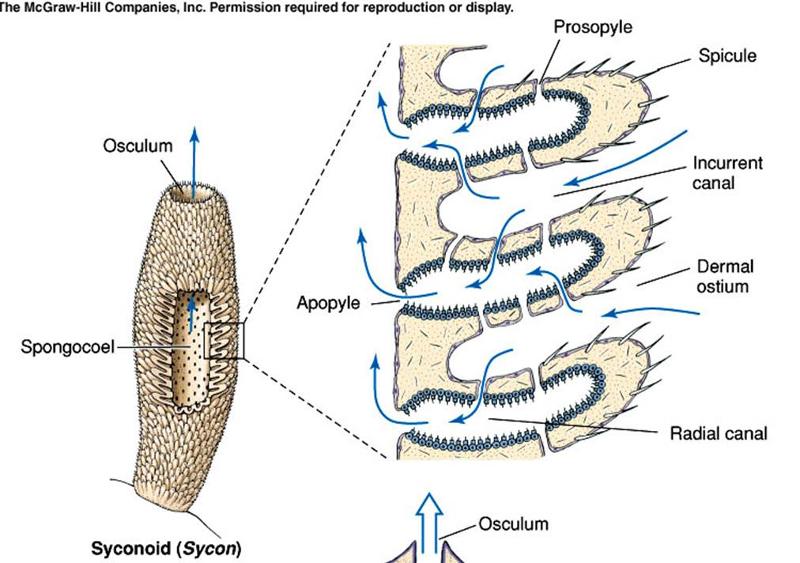
Most sponges reproduce sexually by releasing sperm cells into the water. Sponges are usually hermaphrodites, however they are either male, female or neuter at any time. Gemmules, cyst-like spheres, are made by wrapping shells of spongin, often reinforced with spicules, around clusters of special amoeba-like cells called archeocytes that are full of nutrients. Gemmules are "survival pods" which a few marine sponges and many freshwater species produce in large numbers when dying. A few species reproduce by budding and others by producing gemmules. Sponges can regenerating from fragments that are broken off by currents or predators, although this only works if the fragments include the right types of cells. Sponge cells perform a wide range of bodily functions and appear to be more independent of each other than are the cells of other animals. The flow of water through the sponge is in one direction only, driven by the beating of flagella which line the surface of chambers connected by a series of canals. Cells in the sponge walls filter food from the water as the water is pumped through the body and the osculum ("little mouth"). Instead of a mouths they have tiny pores ( ostia) in their outer walls through which water is drawn. Sponges have a unique feeding system among animals. They rely on keeping up a constant water flow through their bodies to obtain food and oxygen and to remove wastes. Sponges do not have a nervous, digestive or circulatory system.

Spongia officinalis, the bath sponge, have no spicules at all. Some sponges also secrete exoskeletons that lie completely outside their organic components whilst others, e.g. Spicules vary in shape from simple rods to three-dimensional "stars" with up to six rays.


Many also have a skeleton made up of spicules of calcium carbonate or silica. The body of a sponge consists of jelly-like material ( mesohyl) made mainly of collagen and reinforced by a dense network of fibres also made of collagen.sandwiched between two thin layers of cells.


 0 kommentar(er)
0 kommentar(er)
